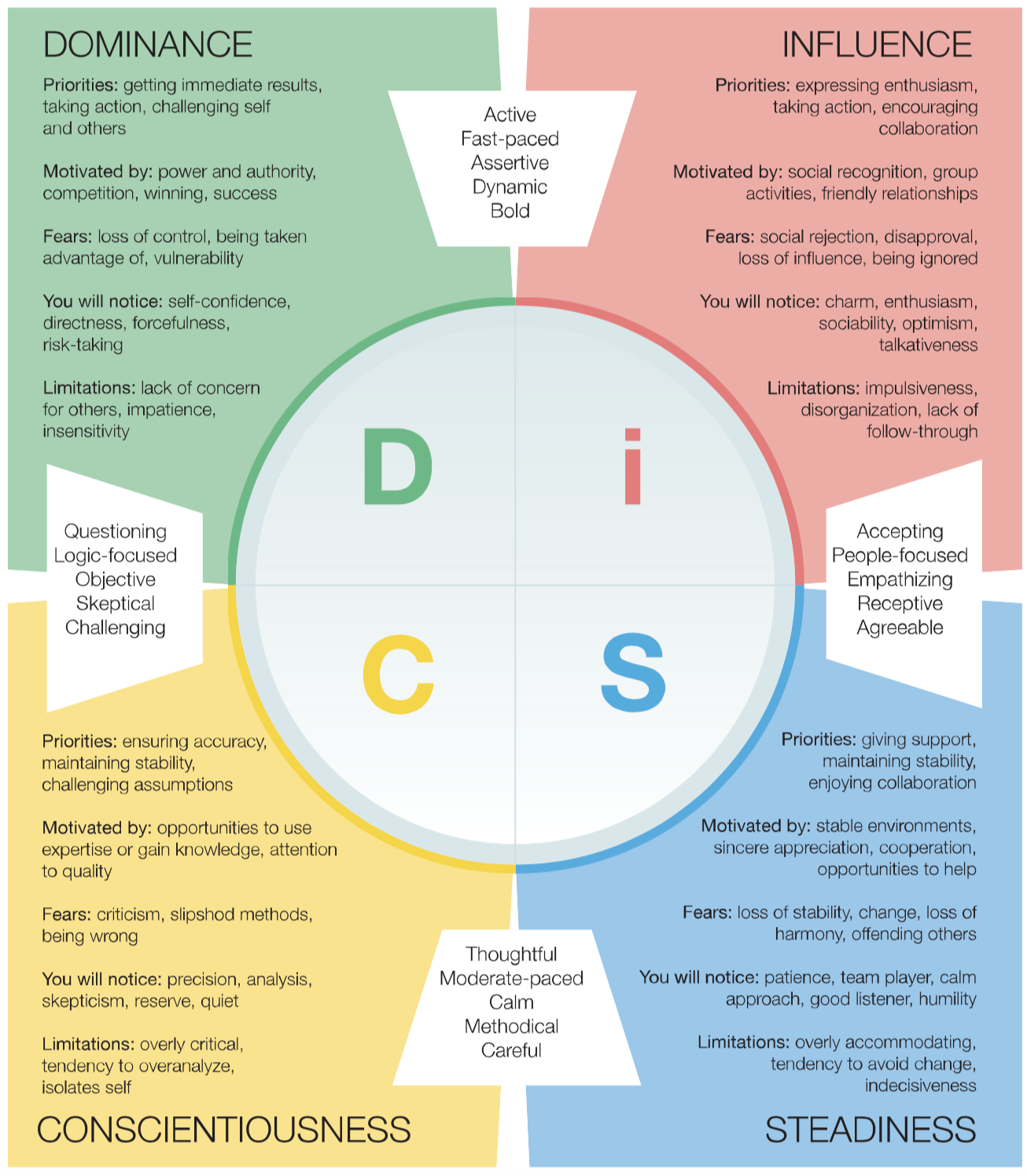THE TOOLKIT
DiSC Dimensions
The DiSC model describes four basic behavioral quadrants: Dominance, Influence, Steadiness, and Conscientiousness (or Compliance in some versions). Everyone is a blend of all four DiSC styles. Usually, one, two, or even three styles may be more prevalent. No one style is any better or worse. These differences in style can be extremely valuable, especially when working in teams. Once you understand these various components and how they show up in your own style as well as the approach of others, people and teams can work more collaboratively, communicatively, and effectively together.
While the DiSC model classifies people’s behavioral preferences into four types, there are two key dimensions by which the tool is based:
- Vertical Dimension: Fast-paced/Outspoken vs. Cautious/Reflective
The vertical dimension is best described as a person’s level of activity ranging from active to thoughtful. People with DiSC styles at the top of the circle tend to be fast-paced and are often described as assertive, dynamic, and bold. Conversely, people with styles that fall toward the bottom of the circle tend to be more moderate-paced and are often described as calm, methodical, and careful. - Horizontal Dimension: Questioning/Skeptical vs. Accepting/Warm
The horizontal dimension runs from questioning to accepting. People with DiSC styles that fall toward the left side of the circle are naturally more skeptical taking on a “prove it” approach and are often described as logic-focused, objective, and challenging. On the other hand, people with styles on the right side of the circle are naturally more open and receptive in nature and can be described as people-focused, empathizing, and agreeable.
What is DiSC?
DiSC is the “how” of communication:
- Observable Language
- Universal Language
- Neutral Language
- Silent Language
What is not DiSC?
DISC is NOT the “why” of personality:
- Not a measure of intelligence
- Not an indicator of values, morals, ethics, or beliefs
- Not a measure of skills or abilities
- Not an indicator of experience
- Not a measure of education or training





